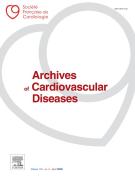Association between lipoprotein(a) concentration and outcomes after percutaneous coronary intervention: A systematic review and meta-analysis - 04/07/25
 , Fabrizio D’Ascenzo b
, Fabrizio D’Ascenzo bCet article a été publié dans un numéro de la revue, cliquez ici pour y accéder
Résumé |
Graphical abstract |
Highlights |
• | Lp(a) is an important determinant of adverse cardiac outcomes in patients with ACS. |
• | We compared outcomes after PCI in patients with high versus low Lp(a) concentration. |
• | High Lp(a) was associated with higher rates of all-cause and cardiovascular deaths. |
• | High Lp(a) was associated with higher rates of MI, MACE and stroke. |
• | Future research: can Lp(a)-targeting therapies improve long-term outcome after PCI? |
Abstract |
Background |
Lipoprotein(a) is well known to be associated with the development of cardiovascular disease. Patients with an elevated baseline lipoprotein(a) concentration may be prone to unfavourable clinical outcomes following percutaneous coronary intervention.
Aim |
We performed a study-level meta-analysis to evaluate differences in clinical outcomes after percutaneous coronary intervention in patients with high and low serum lipoprotein(a) concentrations.
Methods |
A systematic literature search was conducted on Ovid MEDLINE, EMBASE and The Cochrane Library (Wiley) to identify studies reporting clinical outcomes in patients treated with percutaneous coronary intervention, stratified by preoperative lipoprotein(a) concentration. The lipoprotein(a) cut-off value of each individual study was considered for differentiation into low versus high lipoprotein(a) concentration groups. The primary outcome was all-cause death. Secondary outcomes were myocardial infarction, cardiovascular death, major adverse cardiovascular events and stroke.
Results |
Fourteen studies (40,241 patients) were included. At a mean follow-up of 4.9 years, patients with high lipoprotein(a) concentrations had significantly increased rates of all-cause death (incidence rate ratio 1.42, 95% confidence interval 1.16–1.75; P<0.001), myocardial infarction (incidence rate ratio 1.45, 95% confidence interval 1.18–1.78; P<0.001), cardiovascular death (incidence rate ratio 1.50, 95% confidence interval 1.27–1.77; P<0.001), major adverse cardiovascular events (incidence rate ratio 1.35 95% confidence interval 1.19–1.54; P<0.001) and stroke (incidence rate ratio 1.33, 95% confidence interval 1.13–1.56; P<0.001) compared with patients with low lipoprotein(a) concentrations. Leave-one-out and cumulative analyses were consistent with the main analysis.
Conclusions |
Among patients treated with percutaneous coronary intervention, high lipoprotein(a) concentrations are associated with higher rates of all-cause death, myocardial infarction, cardiovascular death, major adverse cardiovascular events and stroke compared with low lipoprotein(a) concentrations.
Le texte complet de cet article est disponible en PDF.Keywords : Lipoprotein(a), Percutaneous coronary intervention, Coronary artery disease
Plan
Bienvenue sur EM-consulte, la référence des professionnels de santé.
L’accès au texte intégral de cet article nécessite un abonnement.
Déjà abonné à cette revue ?

